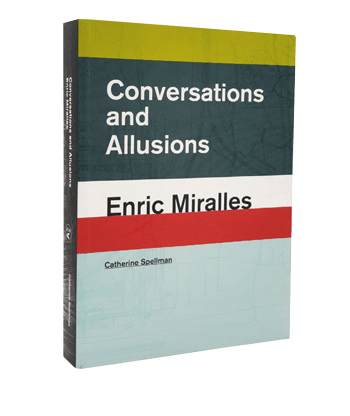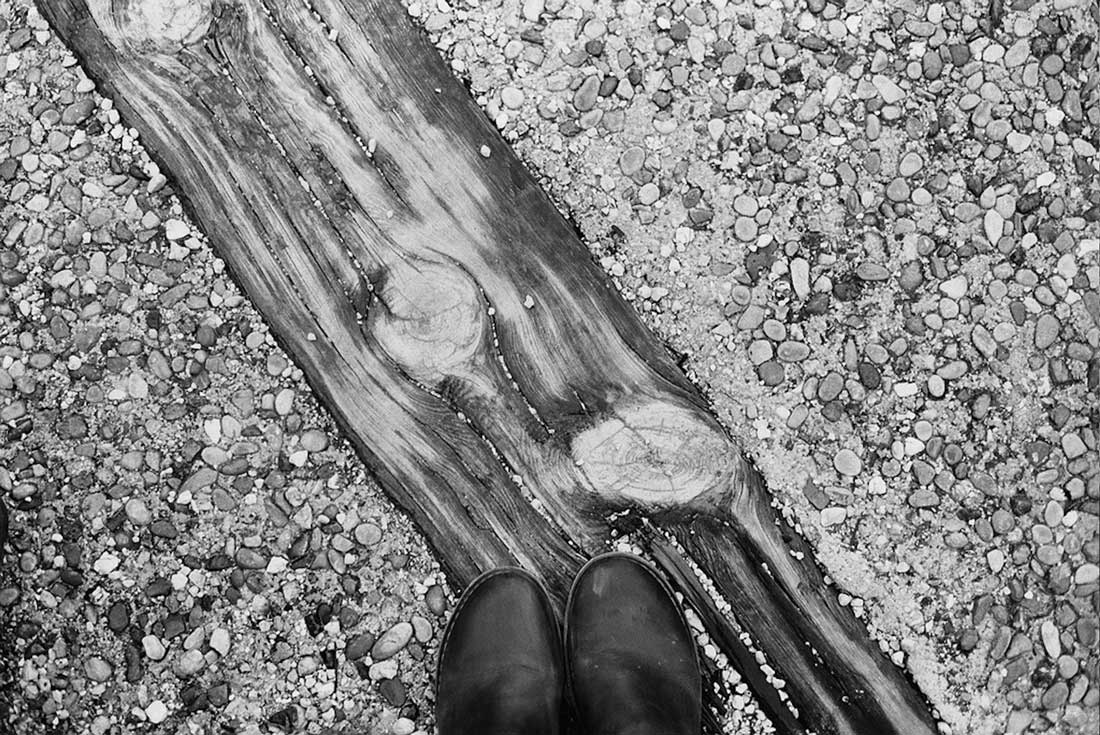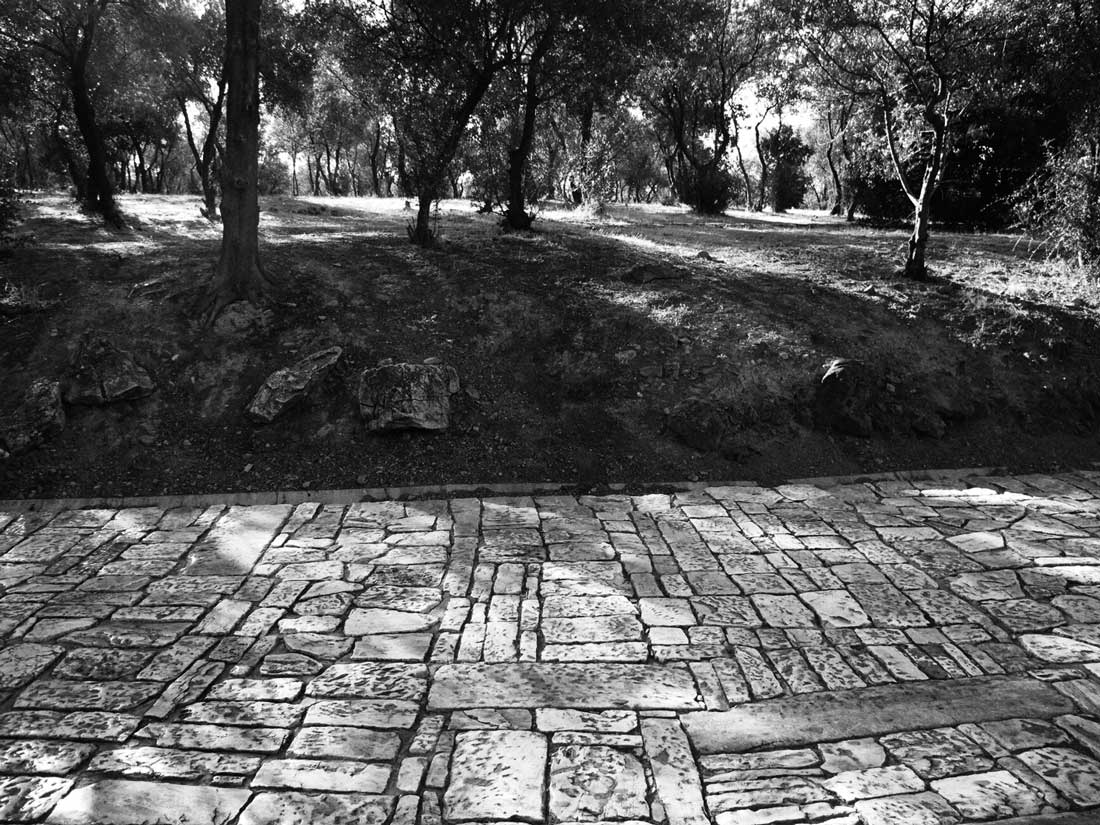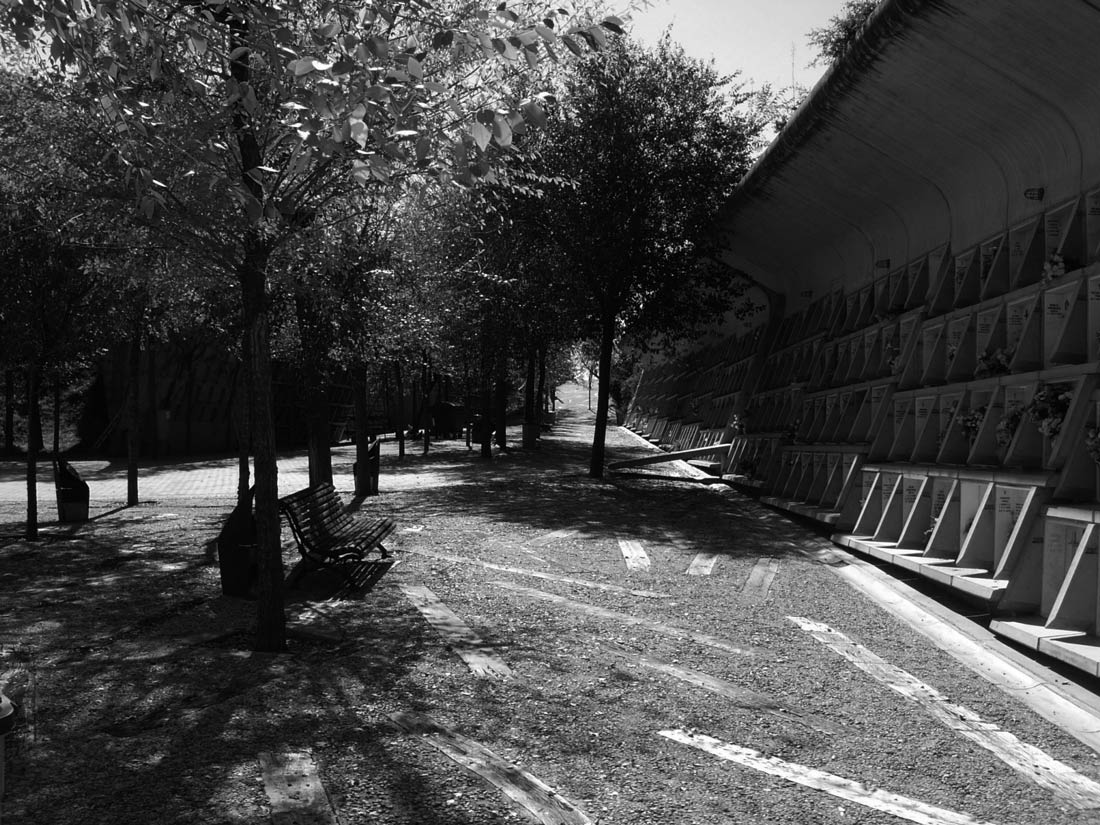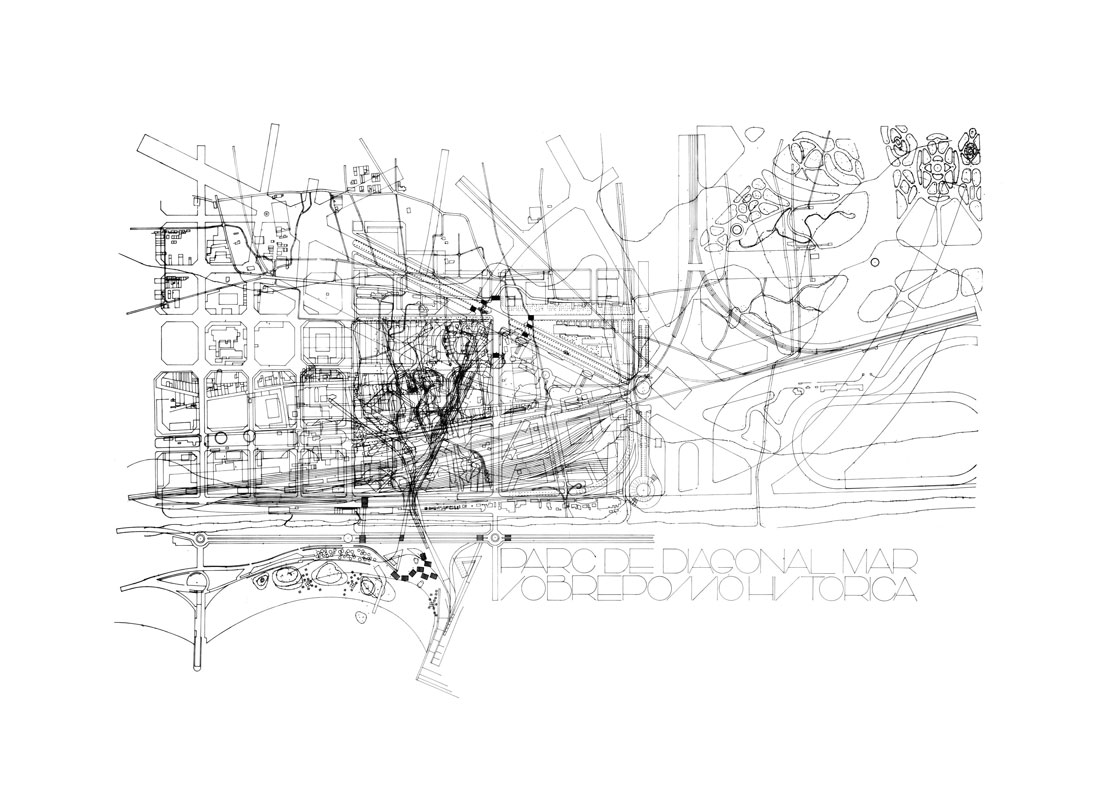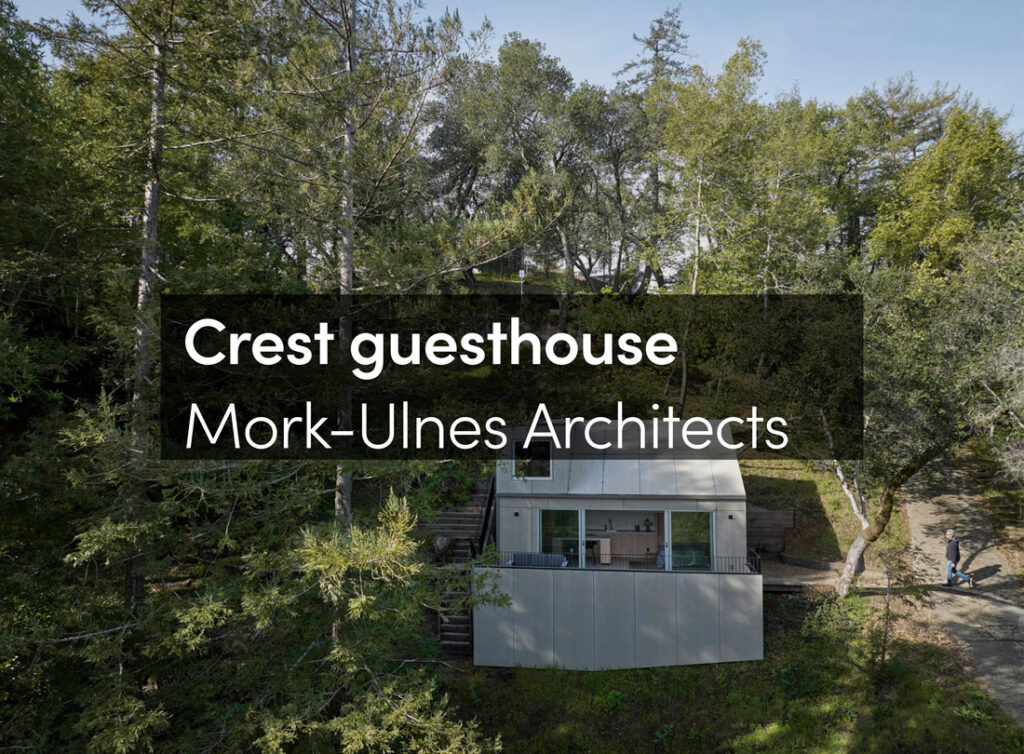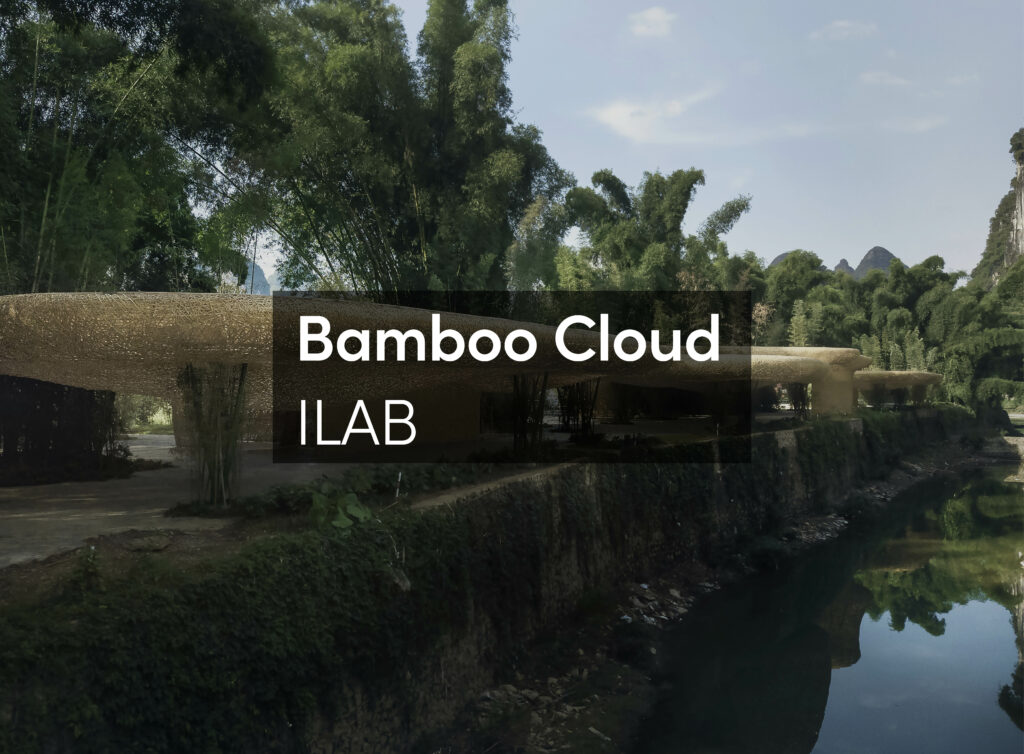Enric Miralles talked a lot about the beginning of a project. How to begin, where to begin, and what to begin with? These are complex and important questions to discuss, because a project’s beginning will determine its direction. There are many productive ways to begin a project and each implies a certain process of working.
Fig.1 Miralles Pinós detail at Igualada Cemetery.
Miralles also said that an architectural project could begin with anything. How is one to decide on a particular beginning? When asked, Miralles suggested a book by the literary theorist Edward Said titled Beginnings: Intention and Method. It is a volume on beginnings in literature with many themes overlapping with architecture. Substitute the word “architect” for “writer” and you will find that the book speaks directly to our discipline. Said writes, “Every writer knows that the choice of beginnings is crucial because it determines much of what follows but also because a work’s beginning is, practically speaking, the main entrance into what it offers…A beginning immediately establishes relationships with works already existing, relationships of either continuity or antagonism…The beginning is the first step in the intentional production of meaning.”[1] On finishing this book, I too was convinced, architecture and all creative work can begin with anything; later, it is a question of how the work is developed.
My first class at the Städelschule with Miralles began in October 1992 with an informal lecture about his recent walk to the Acropolis in Athens, Greece. He talked about architecture and walking as parallel activities that informed and influenced the reconstruction of the path from the city to the Acropolis. The project by Dimitri Pikionis happened over two decades with the architect continuously present on the site. Miralles proposed that the project began with Pikionis simply walking. Many architects do begin a project by walking the site either literally or in their mind. It is a common way of experiencing the place, learning the dimensions, gathering knowledge. However, Miralles suggested something quite different, the physical experience of walking was turned into an idea for the project to relate the past to the present. This really intrigued me, probably because I walk a lot, which embeds in my memory details of the places walked.
Consequently, I have strong memories of conversations with Miralles while walking. During the time I taught with Miralles at the Städelschule and later as a friend, we would walk: with students, family, friends, collaborators; to see architecture projects, to go eat or shop, to meet sponsors or visit sites for projects, to catch the train or plane. Conversations were mundane, extraordinary, and fragmented by the circumstance of time and place. This essay develops segments of these conversations with Miralles around the topic of “Walking to Begin.” Each segment begins with some historical background to establish a common context around the topic.
Walking with Pikionis
The landscape renovation and path to the Acropolis was awarded to Pikionis in 1951 (Fig. 2) . The route that traverses the mountain had not been maintained for centuries and was greatly damaged during the Second World War when it was paved over with a black tarmac that erased almost all traces of its history. In classical times, the path connected a series of resting places for people participating in celebrations, memorials, and devotional rituals. Throughout history, walking the route to the Acropolis was a way to renew and remember the political and social ideals of a classical period that established the first form of democracy.
Fig. 2 Dimitri Pikionis, Acropolis path, ca.1970.
Miralles was fascinated by “this powerful sense of social justice” one feels walking this path. He liked to tell students that when you start a project with a great site the first goal is “not to make an awful mistake.” This is why he found the simplicity of the line/path that became Pikionis’ project so strong. This line/path grows from the existing context: physical, historical, and social, in the most natural way. It is almost like Pikionis gave water to the path, and it grew from the ancient seeds latent beneath the dust. This would not have been Miralles’ manner of intervening, but he did appreciate the sensitivity of Pikionis’ design.
Miralles was certain that Pikionis had probably walked the path daily since he was young. It seemed obvious to Miralles that Pikionis knew the path by the way it felt below his feet. This way of understanding a place is relatively rare but remarkably beneficial. Pikionis shows great restraint and respect in developing this path and toward the ancient buildings by not referring to them directly, rather, Pikionis extends the time spent relating to the Acropolis by making the path a longer and pleasurable experience that encourages daily use.
Fig.3 Miralles Pinós, Igualada path, ca. 1996.
Developed step-by-step the surface of the path is constantly changing and filled with ambiguity between what is material of the past and what is of the present, which continuously engages the walker. Each pace reveals a fragment of recycled stone (some ancient some not), combinations of matured trees and indigenous plants, and urban furniture derived from vernacular Greek structures. These elements, combined with carefully orchestrated views, blend into a rich composition of phenomenal and physical experiences that can only be understood by walking the distance of the project, over and over again. Miralles wrote a short essay titled “Walking” that can be read with multiple meanings: as movement in time and space, a description of the Igualada project (Fig. 3), or a metaphor for how to design. It could also serve as a description of Pikionis’ path:
Tracks as writing on the surface we move or ponder on…That trace which corresponds to the movement we believe we discover in the place. That elementary sign accompanying the shift from one place to another…fragments of these movements describe a geometry linked to reality; they envelope real shapes…. working from the foregoing lines; halting movement. Halting to think of something else, multiplying the forking paths, the intermediate spaces, the escape points… [2]
Repetitive walking is related to repetitive drawing, and both are a way to memorize and understand the particularities of a place. Each architect has a distinctive and innate way of walking/drawing, which is an expression of his or her sensibilities. Some prefer long distances and a slow pace. Others move fast and are able to process a great deal of information in a short amount of time. Pikionis’ drawings show a thick palimpsest of lines in pencil, tracing the realities of the existing situation, overlapping his ideas and desire to clarify and improve the existing context and search for the best position of each element (Fig. 4). These drawings are slow and intentional. They evoke the actual materiality of the path. Reading one of these drawings creates an experience very near to tanding in a specific location on the path.
Fig. 4 Dimitri Pikionis, plan drawing of the Acropolis, 1951.
Miralles’ drawings likewise emerge from the repetitive tracing of the site; however, they are a very different expression. Miralles moved fast and with an abounding amount of energy and ability to make complex connections. He could very quickly trace the same drawing 50 or 60 times to discover a working solution to a spatial problem—with each iteration walking through the space in his head and adjusting the placement of the elements. His drawings often began with a series of sketches and descriptive images that capture the intentions and ideas about the project. These sketch/images are overlapped with the site, generating a series of new site plans. This process is repeated over and over again at multiple scales of the plan and section. At moments in the development of the project, new sketches/images representing other ideas are added to the layers of drawings. The selection of the lines to draw is guided by a straightforward knowledge of the project parameters, technical possibilities, and developed talent to determine which lines best express the idea. It takes practice to acquire fluidity with this method and, similar to the avid walker, the right way home eventually becomes intuitive (Fig. 5).
Fig. 5 Enric Miralles, plan drawing of Park Diagonal Mar, 1998.
Shortly after Miralles gave his lecture on the Acropolis path, the Städelschule architecture class, Miralles, and several of his friends were on a bus from Delhi to Chandigarh, India. Miralles asked to see an essay that I was reading, which was “Walking,” by Henry David Thoreau. Conversations about walking inevitably led to the great American author. On returning the essay, Miralles commented “Thoreau was a very good architect, no?” We both laughed. Thinking back on that exchange, I am certain Miralles meant that a very good architect involves a commitment to individual thought and expression.
In his essay, Thoreau speaks for “absolute freedom and wildness, as contrasted with a freedom and culture merely civil—to regard man as an inhabitant, or a part and parcel of Nature, rather than a member of society.” The essay continues with expanded thoughts on man’s need to “walk” in order to understand his place in the world, relationship to nature, and clarity of thought. Thoreau speculates on the difficulty of finding the best way to walk. He posits that the walk we should take “is perfectly symbolical of the path which we love to travel in the interior and ideal world—a path difficult to determine because it does not yet exist distinctly in our idea.” [3] In the essay, the word “walking” is analogous to writing or any creative occupation. Thoreau describes many of the commonalities between walking and writing, such as intuitive directions, physical engagement, and the search for self-awareness and iteration as the process of all creative activity. Thoreau talks about his practice of walking each day: “I think that I cannot preserve my health and spirits unless I spend four hours a day at least—and it is commonly more than that—sauntering through the woods and over the hills and fields absolutely free from all worldly engagements.”[4]
The capacity for introspection and the ability to recognize oneself as an individual, separate from the environment and other individuals, is crucial to creating brilliant original work. Thoreau writes, “I have met with but one or two persons in the course of my life who understood the art of walking, that is, of taking walks— who had a genius, so to speak, for sauntering: which word is beautifully derived from ‘idle people who roved about the country in the Middle Ages, and asked charity, under pretense of going à la Sainte Terre (to the Holy Land)’…Some, however, would derive the word form sans terre, without land or a home, which, therefore, in the good sense, will mean, having no particular home, but equally at home everywhere.”[5] In my opinion, Miralles was the “sans terre” type of walker, at home wherever he went, finding inspiration and understanding with each step and turning this into his particular architecture.
To walk in the sense that Thoreau describes is to be physically engaged and aware of ones’ surroundings. During his walking adventures, all senses are acutely aware of the specifics of the environment. That awareness of the materiality of place is likewise a common element in Miralles’ work. The projects can be thought of as instruments to measure the tactile qualities of the place. Projects cast stark shadows—patterns that describe the position and strength of the sun. Many projects have entry conditions that funnel the wind through the building much like ancient wind tunnels. Screen and window exterior materials are often rich in texture inviting touch. Fragrant landscapes fill the park and urban plazas with a memorable scent and recall the richness of the rural landscapes near to the urban centers. The projects’ carefully considered pavement patterns that cover walkways, plazas, and internal circulation are often distinct and memorable to the feeling of your foot. Miralles’ projects convey a very strongly physical gesture often experienced through the movement through the project.
Creative work tends to move in a direction particular to the natural instincts of the author (modus operandi ). Thoreau talks of his tendency “to head west, where the earth is more un-exhausted and richer.”[6] He explains that west is a movement away from the history and ties to the Old World; west is in the direction of the future, adventure, and individual expression. He recalls the myth about the original founders of Rome, Romulus and Remus, who were suckled by a wild wolf, demonstrating that civilization has drawn strength from the wild and that nature is beyond the reach of civilized societies. Likewise Miralles’ modus operandi is in the direction of the west and the wild. Miralles’ work separates from the direction of international modernism focusing on the specific of qualities of the local situation. In Miralles’ case, we find an instinct tendency toward bold structures, complex sequences of movement, raw material, dramatic light, strong juxtapositions, and dualities and opposing forces expressed through a medium of abstraction.
To Miralles, and to many of us fortunate to have known him, a project can begin with any type of material and ideas if one accepts that the material sets you on a path of discovery that has its own logic embedded within it. This path is your walkway through the development of the project. The key is to keep walking in the direction of the logic of the project, to follow the flow of the idea and allow it to become your map and guide. Every designer must find his or her manner of walking with the path of their project, and each designer must be prepared to walk a long distance remembering that the process of the walk is the project. Happy journeys.
